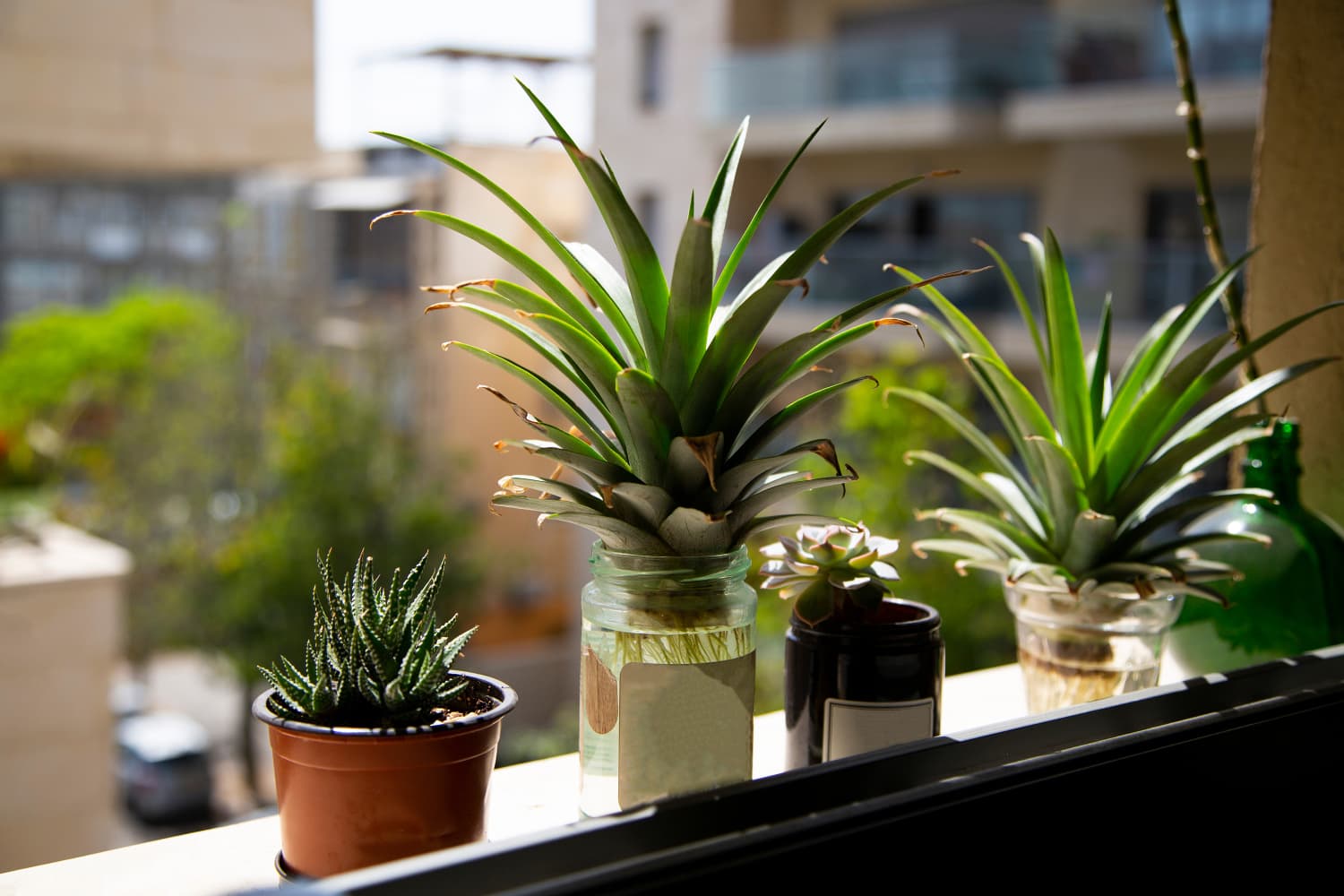
There’s nothing like a bite of juicy, sweet pineapple to transport you right to the white sand beaches of your favorite tropical paradise. (And not only is it delicious, but pineapple also boasts plenty of health benefits too!). Most people just pop over to their neighborhood grocery store to pick up a pineapple whenever they get the urge — but did you know you can actually grow your own pineapple at home with just the top of an existing pineapple? That’s right! And it’s easier to do than it sounds.
Pineapples have a unique property called totipotency, says Diane Kuthy, founder and lead gardening expert at How to Grow Everything. Totipotency is the ability to form a new plant from any part of an existing plant’s tissue. (Other kitchen scraps you can turn into plants are potatoes, onions, scallions, and garlic.)
Below, learn how to plant a pineapple top to grow your very own pineapple at home. Then, learn everything you need to do to help your pineapple plant thrive, whether you keep it inside or transfer it to your garden outside.
How to Propagate a Pineapple Top
Growing a pineapple from another pineapple, a process called propagation, is relatively simple, Kuthy says. But there are some key steps you’ll need to follow — otherwise, you could end up with a moldy mess. According to Kuthy, here’s how to propagate a pineapple using the top of an existing fruit.
How to Plant a Pineapple Top Indoors
The good thing about growing plants indoors is that you don’t have to worry about the weather. You can provide your plants with a consistent environment that’s in line with their needs, which can be quite specific. “Pineapples grown in containers need an environment which mimics the tropics: warm, humid, and very sunny,” Kuthy says.
When it comes to growing pineapples, be prepared that you won’t get a brand-new pineapple overnight. “It can take between one to two years for your pineapple plant to produce a single fruit,” says Kuthy. So you’ll definitely have to be patient if you want a home-grown pineapple!
Tips for Growing a Pineapple Indoors
How to Plant a Pineapple Top Outside
Pineapples are a tropical fruit, which sadly means they’re not suited to outdoor growing in the vast majority of the continental U.S. But if you happen to live in one of the more tropical climate zones, like Florida or Hawai’i, you should be well-equipped when it comes to growing pineapples. Simply plant your newly sprouted pineapple right in the ground and make sure it gets plenty of sunlight and moisture.
“Pineapples aren’t too fussy, don’t need fertilizing, and can thrive in a variety of sunlight conditions other than full shade. Just ensure that your plant gets consistent moisture. During the rainy season, this is easy to accomplish. During the dry season, just make sure that your pineapple plant doesn’t get too dry,” Kuthy says.
In Which Zones Can a Pineapple Be Grown?
Pineapple plants can really only thrive in climate zones 10-12, the warmest of the zones. These zones only comprise the far southern region of the country: places like Florida, Louisiana, and southern Texas. Pineapples are tropical plants and need consistent tropical weather to thrive, Kuthy says. “If you live in the other zones, you should only consider growing pineapples in containers which can be moved indoors to a warm sunny location when the weather gets too cool.”





